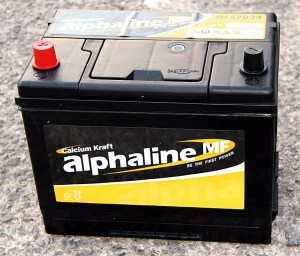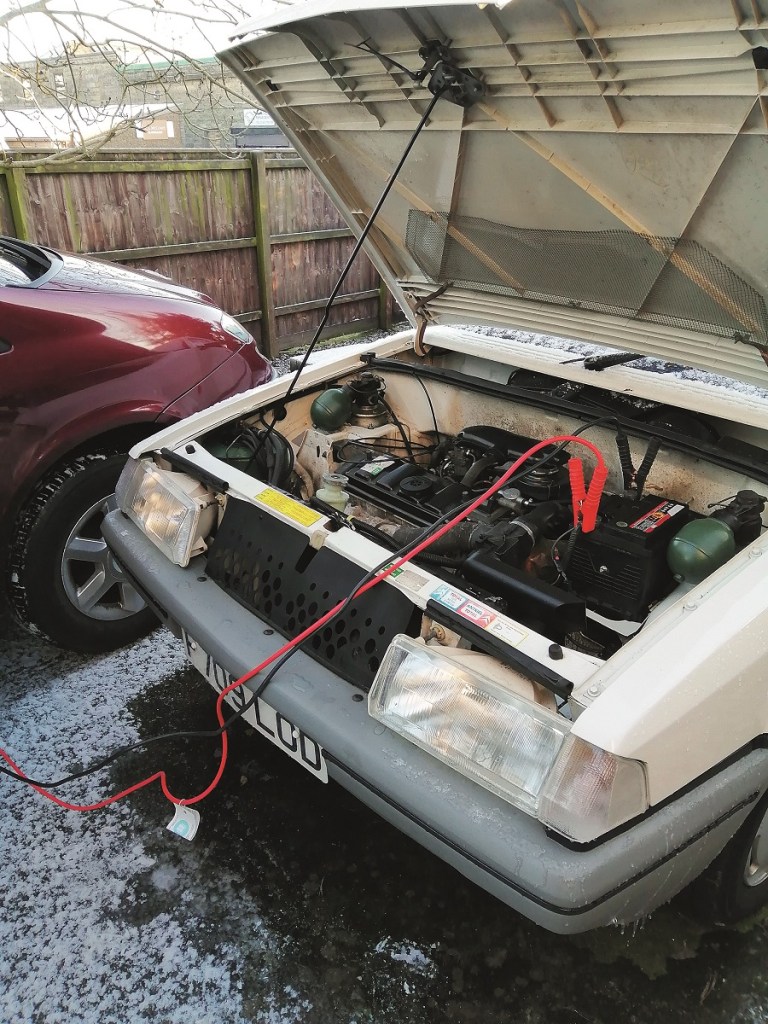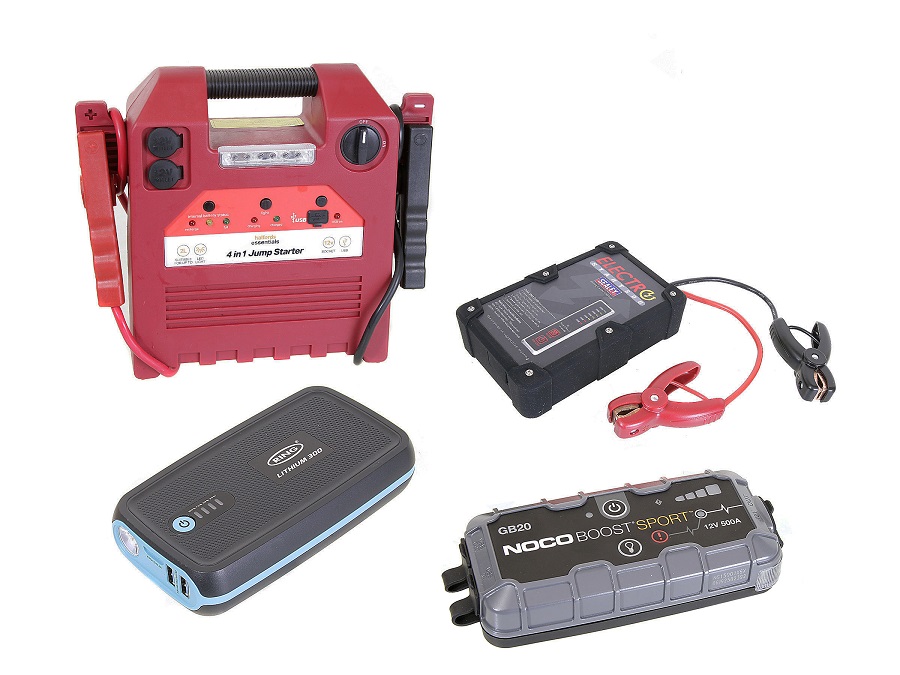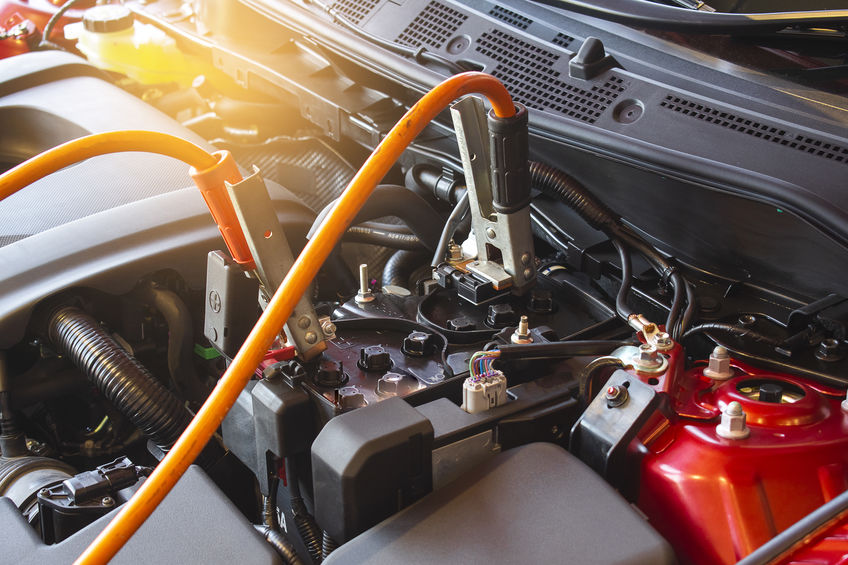A flat car battery can cost you time and stress. Read our guide to car jump leads to make sure you don’t get caught out by one.
Car jump leads are a great get-out-of-jail tool to have in your arsenal, provided that you’ve got access to another running car, whether it be yours, a friend’s, or that of a helpful passer-by. In this guide, we’ll tell you everything you need to know about them before you go out and buy a set, so without further ado, let’s get straight into it!
How jump leads work
The idea behind jump leads is actually pretty easy to get your head around. Essentially, they’re a pair of insulated wires with alligator clips at either end – typically one colored red, one colored black. The red wire indicates positive polarity, whereas the black wire is for negative.
These leads serve as connection points between two power sources – in this case, two car batteries. Current from the full car battery travels across to the dead one via the red lead, which if given enough time, should then charge back up. Nice and simple, right?
Like anything though, there are some nuances to be aware of. For example, the batteries found in diesel vehicles tend to be more powerful than the ones found in petrol vehicles, and as such, this can sometimes require different jump leads. Typically, experts suggest you use a lead with a 10–25mm² cross-section for petrol engines, and 35–50mm² for diesel engines. If you’re unsure, it’s always better to have slightly too powerful jump leads than ones that aren’t powerful enough. Also, you may find that entry level leads are only good up to a certain engine capacity. Keep this in mind when buying leads for your own car.

How to use jump leads: safety checks
Before starting, there’s a few checks that you need to make. Firstly, is the dead battery visually damaged, or leaking at all? If so, take a step back and call in the professionals to handle that mess. If not, you’re safe to proceed.
However, make sure that no metal items, such as clothing accessories, are in danger of coming into contact with the battery during this process (other than the jump lead clips, obviously).In short, if you’re rocking any hand jewelry, maybe set it aside for a moment somewhere where you won’t lose it. Finally, make sure that the dead car’s key is not in its ignition barrel.

How to use jump leads: the procedure
If you’ve got this far, you’re ready to start the procedure. The first thing you’ll want to do is line up the running car with the dead one, ensuring that the two car’s batteries are as close together as possible. Once this is done, shut off the running car, and remove its key from the ignition.
Next, you’ll want to connect the two cars’ positive battery terminals with the red jump lead. As for the black lead, you’ll need to connect this to the negative terminal on the running car, but don’t simply join it to the dead car’s negative terminal as well. That would be an easy, but potentially catastrophic mistake to make. Instead, what you want to do is secure the other end of the black lead to an earth point in the dead car. An unpainted part of the metal chassis is usually a good option, but wherever you choose, make sure it isn’t in close proximity to either the battery or any part of the fuel system. The strut tower is a popular choice.
After taking a moment to double check everything, start up the healthy car and leave it running for at least a minute. With the two cars still connected, you’ll then want to try the previously dead car to see if it’s charged enough to turn over. Once you’ve got the dead car running, it’ll turn into a bit of a waiting game. Ideally, leave both vehicles idling for about 10 minutes or so to ensure both leave with a healthy charge.
Once that time has elapsed, turn both cars off. Only then should you start to disconnect the jump leads between them. Remove the black lead first, then the red one. Afterwards, you should find that both cars can start up independently.

Recommended brands
There are all sorts of brands out there which supply car jump leads, and if you’re buying from a reputable retailer, all of the ones that you’ll find on the market should be up to the job that they claim they’re capable of. However, some products are naturally higher quality than others. Take the Energizer jump cables, for example. These come in various specifications of length and power for all sorts of vehicles, the range starting from $47.74 / £37.92. Einhell is another reputable brand worth considering too.
Alternatively, Sakura’s base-spec booster cables are a cheap and cheerful (but still competent) option for cars with an engine capacity up to 2000cc. That makes them perfectly usable for most entry level tuner cars. On the other end of the scale, Voilamart heavy duty jump leads can handle anything up to 9500cc!
Finally, if you happen to be based in the UK, you might like to opt for jump leads supplied by the AA, giving you the peace of mind that these leads are successfully used in roadside recoveries all the time.

Portable jump starters
One obvious downside to relying on jump leads to recharge your car battery is the need for an auxiliary power source to connect to (e.g., another car). So, if you’d rather pay a bit more cash for a tool that will do the same job independently, you might want to have a look into portable jump starters. We’ve compiled a few of our favorites, here.
These little boxes of energy effectively take over the role of the second (running) car when performing a jump start. So long as you remember to keep it charged up, the jump starter should be capable of recharging your ride’s battery by itself (via a set of supplied jump leads that lock into the starter). It may take a couple of goes if your battery is *really* flat, but overall, a portable jump starter is a brilliant investment. Ours have certainly saved our bacon more than a few times!








